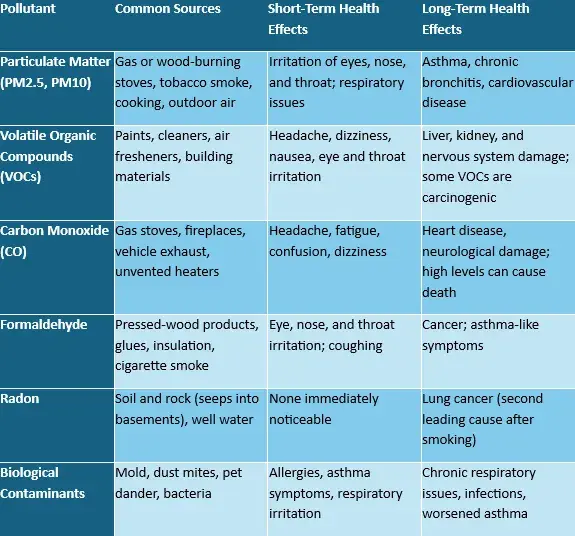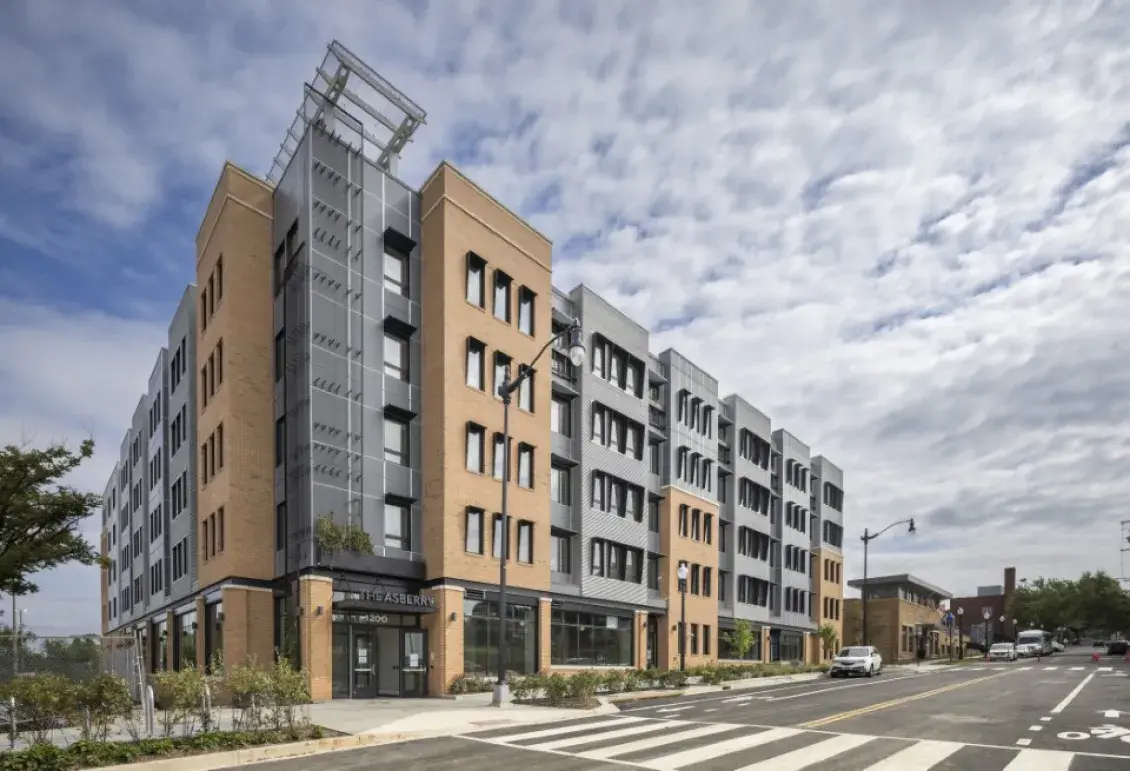This piece is part of our series, Policy Actions for Racial Equity (PARE), which explores the many ways housing policies contribute to racial disparities in our country.
The 2025 State of the Air report by the American Lung Association found that almost half of the U.S. population (46%) currently live with unhealthy levels of air pollution. Homes might be seen as a sanctuary from the outdoors, but certain air pollutants are concentrated up to two to five times more indoors compared to outdoors. With people spending up to 90% of their time indoors, it is critical to make design choices that create a healthy indoor living environment.
The health risks of both outdoor and indoor air pollution are well-documented and especially concerning when considering the U.S.’s aging housing stock. Forty-eight percent of U.S. homes were built prior to 1980, before many modern-day building codes were widely adopted and the relationship between design choices and indoor air quality was well-recognized. It's therefore crucial to understand key strategies for providing a healthy indoor environment in both new and existing housing stocks.

Inequities in Air Pollution Exposure
Many studies, covering a range of pollutants and U.S. locations, have shown that communities of color and low-income households encounter higher rates of air pollution exposure, largely due to historic and systemic factors.
Research has shown that lower-income communities and communities of color experience disproportionately high degrees of poor air quality compared to their higher-income and white counterparts. In a 2021 study, Liu et al. found that, on average, non-Hispanic Black, non-Hispanic Asian, and Hispanic groups analyzed had higher exposure across all six major outdoor air pollutants — carbon monoxide, nitrogen dioxide, ozone, sulfur dioxide, and particulate matter (PM2.5, PM10) — than non-Hispanic white groups. Lower-income groups were also found to have higher air pollution exposure for five out of the six major pollutants.
Several political, cultural, regulatory, and economic factors contribute to the existing disparities in air pollutant exposure. Land use decisions have, and continue to, push pollutant-generating infrastructure – such as industrial facilities, AI data centers, and major roads – further away from wealthier neighborhoods and towards low-income communities that tend to be home to more households of color. Homes in lower-income communities often have higher levels of allergen sources, such as pests, dust, and dampness, made worse by the age of a building, housing density, and proximity to pollutant generating activities. These living conditions can lead to asthma sensitization and exacerbation for residents.
Trends for land use tend to follow a long history of redlining, which prevented people of color from buying homes in certain neighborhoods through the discriminatory denial of services to secure mortgages, loans, and property insurance. This practice has reinforced racial segregation and inequities, leading to higher levels of exposure to air pollutants across households of color that historically have had limited choices of neighborhoods. A study by the American Chemical Society shows that nearly 202 cities that currently encounter the most intraurban air pollution disparity have a long history of redlining practices.

Health and Resilience Strategies in Practice
Employing design strategies that improve indoor air quality (IAQ) in residences, such as better building material choices and intentional protection against outdoor air pollution, ensures that developers consider IAQ among other strategies early in the design process. This is especially important when considering the location, climate, and health risks of many affordable housing projects.
Pursuing all-electric systems, better air quality strategies, and energy efficiency through intentional design and certifications goes beyond climate change mitigation to ensure residential health, wellbeing, and safety in all affordable housing communities.
Julie Klump, Vice President of Design and Building Performance, POAH
Barry Farm: The Asberry by the Preservation of Affordable Housing, Inc. (POAH) and District of Columbia Housing Authority (DCHA) is one of many recent projects that effectively implement these critical design strategies. Barry Farm–Hillsdale was established in 1867 for formerly enslaved African Americans to own land and was the first historically Black community in Washington D. C. The redevelopment of the property has created a mixed-income affordable housing project that recently earned 2020 Enterprise Green Communities Plus certification and was certified to other green and healthy standards [Passive House Institute US (PHIUS) and EPA Indoor Air Plus]. The project, which prioritizes both energy efficiency and indoor air quality, is all-electric and uses renewables to meet over 25% of its energy needs, eliminating combustion sources within the building and contributing to healthier homes. The team also focuses on other strategies found in Enterprise Green Communities, including a tight building envelope, efficient ventilation, moisture management, and low VOC materials and finishes.
Improving Indoor Air Quality Through Design Choices
The Enterprise Green Communities Criteria is a green building certification program designed by and for affordable housing operators that provides a framework for building healthy, efficient, and resilient homes. Several criteria within the program, including some used by the developers of Barry Farm, offer strategies to provide healthier homes for the most vulnerable populations.
A common indoor air pollutant, Volatile Organic Compounds (VOCs), are found in building materials such as adhesives and sealants, as well as finishes including paint, flooring, and carpeting. Choosing no or low-VOC materials is therefore crucial for residents' health and Category 6 of the Criteria provides pathways for making healthier material choices.
Gas-fueled home appliances also contribute to indoor air pollution; Category 5 addresses this for both new homes and existing building stock. Gas stoves emit several chemicals that are detrimental to respiratory health, including nitrogen dioxide (NO2), carbon monoxide (CO), methane, benzene and formaldehyde. Replacing gas appliances with electric removes these combustion sources within the home; powering them with onsite renewable energy reduces power plant emissions, contributing to improved outdoor air quality.
Without proper ventilation and a tight building envelope, outdoor particles and other pollutants can find their way indoors and also react with chemicals inside the home. These design choices, outlined in Categories 5 and 7, are especially important in homes serving low-income communities that face higher risk to changing climate conditions and higher outdoor air pollution levels due in part to historic housing policies.
These IAQ-improving criteria allow affordable housing organizations to use the 2020 Enterprise Green Communities Criteria framework as a baseline to also earn EPA Indoor Air Plus, a voluntary program to improve IAQ through construction practices and product specifications.
Resources to Build Increased Resilience
With climate hazards on the rise, conditions like extreme heat and wildfires will exacerbate our air quality with particulate pollutants, such as soot, and ground-level ozone. While these conditions impact every household nationwide, lower-income communities and communities of color who are already disproportionately exposed to pollutants and toxins especially need resources and support.
Enterprise has created the comprehensive online Climate Risk Reduction Resource Hub, with tools including a Community Risk Assessment and Disaster Recovery Plan which can help communities prioritize proper risk reduction measures to ensure resident safety, health, and empowerment. Additionally, Enterprise Green Communities has a specific resource list to support preparation for poor air quality including actions for individuals, communities, housing providers, and government entities. For more information or to get started on your own certification, visit our Green Communities portal or reach out to us at certification@enterprisecommunity.org.
We encourage all who believe in the need to create a just society to read, discuss, and share the PARE blog series as we learn and act to address the impacts of housing policies on racial equity in America. We also invite you to join us in this conversation, by suggesting additional topics and sharing resources for how we can advocate for greater racial equity. If you’d like to offer feedback on our body of work, please reach out to the Public Policy team. To stay up to date with critical housing policy news, subscribe to our bi-monthly Capitol Express newsletter.



